Though this post takes place mostly indoors, it began outdoors. Last…wow, October? Last October, while doing some tree surveys in Missouri, our crew came across a real rank smell. Real rank, like oh dear lord what could possibly smell so foul as that, even a dog would run away with its tail between its legs, gross.
Anyway, turns out it was an eastern box turtle. Rotting away. No head, no legs or tail, just a goop of inner squishy bits in an advanced stage of decay. But–a fully intact shell, carapace & plastron both. Being entranced by chelonians, I needed it.
Luckily I was in the company of an understanding group. We double-bagged it (it still smelled horrible through the two bags) and I carried it around in my backpack for an entire day, stench following me. Since I was flying back to Illinois, my coworker Becky was kind enough to offer to bury it in her yard for a few months to let nature work its magic. Lo and behold, when it was expertly delivered to me, it hardly smelled at all (thanks saprotrophs and Becky!).
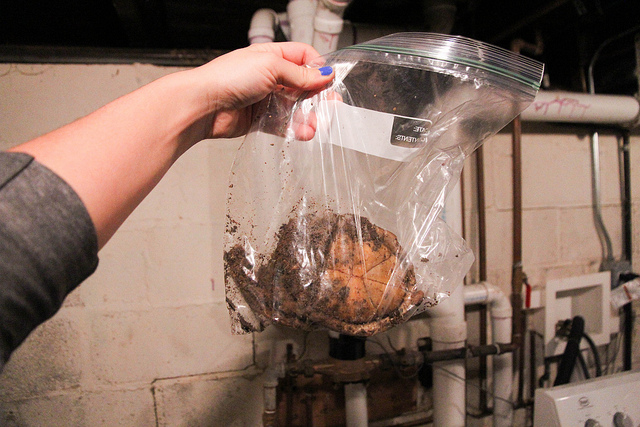
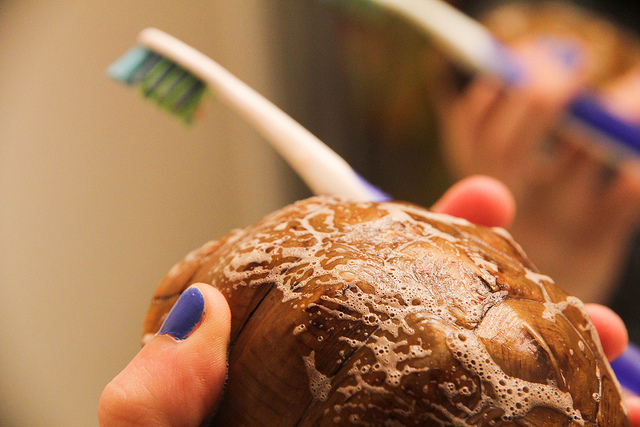
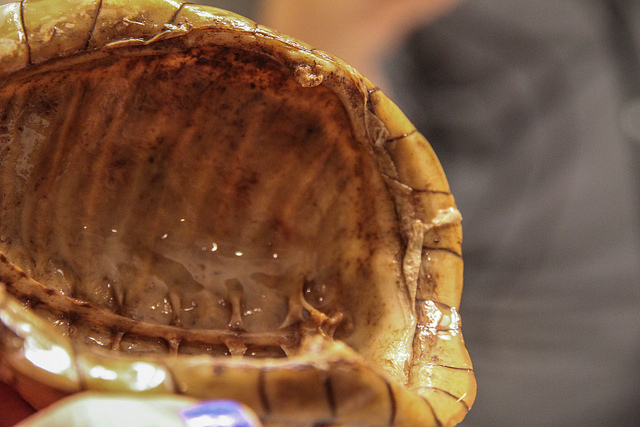

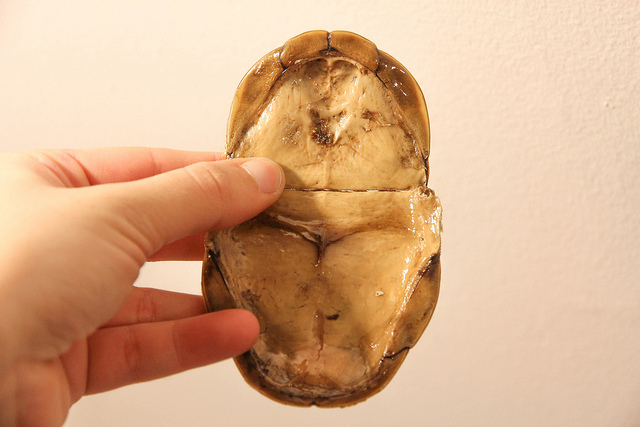
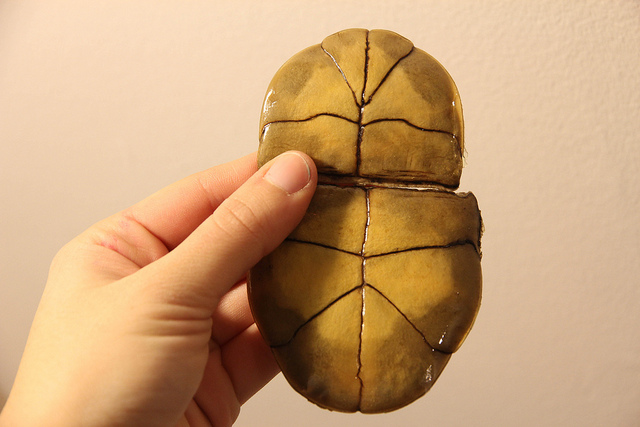
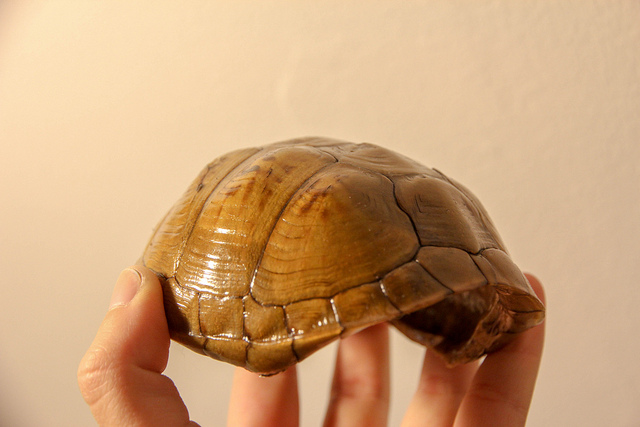
How long does the lacquer finish last on a shell and if the shell has an intrinsic value for example if it is a collector item, unique or rare does covering it in lacquer devalue it?
It’s been 6 years, several moves, and lots of handling since I originally finished the shell and it’s in perfect shape still. The scutes are all in place and no sign of wear. These turtles are quite common in the heart of their range, so the shell isn’t rare or worth much at all.
Hi! What kind of laquer did you use?
This was a while back so I’m not 100% sure, but I think it was just something like polyurethane from the hardware store.
I recently acquired an Eastern Box Turtle’s empty shell, carapace and plastron intact. From the scene of which I found it, the poor thing likely died from a small intentionally lit fire. People are so very cruel 😔 Oddly, the fire seemed to have almost bleached the shell in a sense. It was crystal white almost. I painted mine with a top coat fingernail polish (only on-hand “laqueresque” material), then I applied a clear glow-in-the-dark paint followed by another coat of polish. After sealing completely, I decided I wanted to do the same with keeping the integrity of the living turtle’s ability to open and close it’s shell, and the only possible solution I could come up with was to use a small hinge. This is where my problem comes up. I attached the two plastron pieces to the hinge with Scotch Super Glue and within 2 day’s time, they fell apart. I want to keep the shell from any damage if possible, but I can’t think of anything else to adhere them with. My second problem arose when keeping the carapace and plastron together without fully gluing them. I was thinking maybe some type of tiny latches like on the back of a picture frame to hold them together. They could easily be taken apart to show the inside of the shell in that case. I’m scared attempting to screw into the bone may break it though. I’m glad to hear someone’s as interested in something like this as I am 😊